-
 Bitcoin
Bitcoin $84,293.8118
2.92% -
 Ethereum
Ethereum $1,812.6156
1.61% -
 Tether USDt
Tether USDt $0.9995
-0.01% -
 XRP
XRP $2.1300
3.96% -
 BNB
BNB $598.0731
1.81% -
 Solana
Solana $122.5476
6.46% -
 USDC
USDC $0.9999
0.00% -
 Dogecoin
Dogecoin $0.1697
6.92% -
 Cardano
Cardano $0.6614
3.58% -
 TRON
TRON $0.2399
1.67% -
 UNUS SED LEO
UNUS SED LEO $9.4721
0.87% -
 Chainlink
Chainlink $12.9918
2.93% -
 Toncoin
Toncoin $3.3918
-5.15% -
 Stellar
Stellar $0.2593
0.64% -
 Avalanche
Avalanche $18.1424
0.54% -
 Sui
Sui $2.2723
2.26% -
 Shiba Inu
Shiba Inu $0.0...01227
0.72% -
 Hedera
Hedera $0.1657
3.27% -
 Litecoin
Litecoin $84.4108
2.68% -
 Polkadot
Polkadot $4.0452
0.41% -
 MANTRA
MANTRA $6.2735
-2.26% -
 Bitcoin Cash
Bitcoin Cash $299.8507
1.71% -
 Bitget Token
Bitget Token $4.5438
1.99% -
 Dai
Dai $1.0001
0.01% -
 Ethena USDe
Ethena USDe $0.9992
-0.03% -
 Hyperliquid
Hyperliquid $11.9337
5.81% -
 Monero
Monero $215.5583
2.77% -
 Uniswap
Uniswap $5.9113
3.01% -
 Pi
Pi $0.5297
-9.83% -
 NEAR Protocol
NEAR Protocol $2.4929
1.07%
What does “cross-chain” of NFT mean?
Cross-chain NFTs enhance liquidity and utility by enabling seamless transfers across blockchains, addressing scalability and accessibility challenges in the growing NFT market.
Apr 03, 2025 at 11:14 pm

The term "cross-chain" in the context of NFTs refers to the ability of non-fungible tokens to be transferred and utilized across different blockchain networks. This interoperability is crucial for expanding the utility and accessibility of NFTs, allowing them to be used in various ecosystems and applications beyond their original blockchain. Cross-chain functionality addresses several challenges, such as scalability, liquidity, and user experience, by enabling seamless interactions between different blockchain platforms. As the NFT market continues to grow, the importance of cross-chain capabilities becomes increasingly evident, driving innovation and adoption across the cryptocurrency space.
The Importance of Cross-Chain Functionality for NFTs
Cross-chain functionality is vital for the growth and sustainability of the NFT market. It allows NFTs to be more versatile and accessible, enabling users to leverage their assets across multiple blockchain ecosystems. This interoperability enhances the liquidity of NFTs, as they can be traded on different platforms and marketplaces, increasing their potential value and utility. Additionally, cross-chain capabilities can improve scalability by distributing the load across multiple networks, reducing congestion and transaction fees on any single blockchain. This is particularly important for high-demand NFTs, where network congestion can significantly impact user experience and transaction costs.
How Cross-Chain NFTs Work
Cross-chain NFTs operate through various mechanisms that facilitate their transfer and interaction across different blockchains. One common method is the use of bridge protocols, which act as intermediaries to transfer assets between chains. These protocols lock the NFT on the source blockchain and mint a corresponding token on the destination blockchain, ensuring that the NFT remains unique and secure. Another approach involves wrapped NFTs, where the original NFT is locked on its native chain, and a wrapped version is created on another chain, allowing it to be used in that ecosystem. These methods enable seamless cross-chain interactions, enhancing the overall utility and accessibility of NFTs.
Benefits of Cross-Chain NFTs
- Increased Liquidity: Cross-chain NFTs can be traded on multiple marketplaces, increasing their liquidity and potential value.
- Enhanced Utility: By being usable across different ecosystems, NFTs can serve a wider range of applications and use cases.
- Improved Scalability: Distributing the load across multiple blockchains can reduce congestion and transaction fees, improving the overall user experience.
- Greater Accessibility: Users can access and interact with NFTs on their preferred blockchain, making the technology more inclusive and user-friendly.
Challenges and Solutions in Cross-Chain NFT Implementation
Implementing cross-chain functionality for NFTs comes with its own set of challenges. One major issue is security, as transferring assets between chains can introduce vulnerabilities. To address this, developers use robust security measures, such as multi-signature wallets and smart contract audits, to ensure the safety of cross-chain transactions. Another challenge is standardization, as different blockchains may have varying standards for NFTs. Solutions like the ERC-721 and ERC-1155 standards on Ethereum, and similar standards on other chains, help in creating a more unified approach to cross-chain NFTs. Additionally, interoperability protocols like Polkadot and Cosmos are working to create a more seamless experience for cross-chain interactions.
Examples of Cross-Chain NFT Projects
Several projects are leading the way in the development of cross-chain NFTs. Chainlink is working on cross-chain interoperability solutions that can be used for NFTs, enabling them to be transferred and utilized across different blockchains. Polkadot offers a multi-chain framework that allows NFTs to be created and transferred across its parachains, enhancing their utility and accessibility. Cosmos also provides a platform for cross-chain communication, enabling NFTs to be used in various applications within its ecosystem. These projects demonstrate the potential of cross-chain NFTs and highlight the ongoing efforts to improve interoperability in the NFT space.
The Future of Cross-Chain NFTs
The future of cross-chain NFTs looks promising, with ongoing developments and innovations aimed at enhancing their interoperability and utility. As more projects and platforms adopt cross-chain solutions, the barriers to entry for NFTs will continue to decrease, making them more accessible to a broader audience. The integration of cross-chain NFTs into decentralized finance (DeFi) and gaming ecosystems is also expected to drive further adoption and innovation. With the continued growth of the NFT market, cross-chain functionality will play a crucial role in shaping the future of digital assets and their applications across various blockchain networks.
Common Questions About Cross-Chain NFTs
Q: What is a cross-chain NFT?
A: A cross-chain NFT is a non-fungible token that can be transferred and utilized across different blockchain networks, enhancing its utility and accessibility.
Q: Why is cross-chain functionality important for NFTs?
A: Cross-chain functionality is important for NFTs because it increases their liquidity, enhances their utility, improves scalability, and makes them more accessible to users across different blockchain ecosystems.
Q: How do cross-chain NFTs work?
A: Cross-chain NFTs work through mechanisms like bridge protocols and wrapped NFTs, which facilitate their transfer and interaction across different blockchains, ensuring their uniqueness and security.
Q: What are some challenges in implementing cross-chain NFTs?
A: Challenges in implementing cross-chain NFTs include security concerns and the need for standardization across different blockchains. Solutions involve robust security measures and the adoption of unified standards like ERC-721 and ERC-1155.
Q: Can you give examples of projects working on cross-chain NFTs?
A: Examples of projects working on cross-chain NFTs include Chainlink, Polkadot, and Cosmos, which are developing solutions to enhance the interoperability and utility of NFTs across different blockchain networks.
Q: What does the future hold for cross-chain NFTs?
A: The future of cross-chain NFTs looks promising, with ongoing developments aimed at improving their interoperability and integration into various ecosystems, including DeFi and gaming, driving further adoption and innovation.
Disclaimer:info@kdj.com
The information provided is not trading advice. kdj.com does not assume any responsibility for any investments made based on the information provided in this article. Cryptocurrencies are highly volatile and it is highly recommended that you invest with caution after thorough research!
If you believe that the content used on this website infringes your copyright, please contact us immediately (info@kdj.com) and we will delete it promptly.
- Justin Sun Accuses First Digital Trust of Insolvency, Triggering Severe Depeg of the FTUSD Stablecoin
- 2025-04-05 03:20:12
- The psychology of betting: how digital assets influence player behavior in 1win
- 2025-04-05 03:20:12
- Remittix Solves Real-World Problems and Provides an Actual Solution to Crypto Payments
- 2025-04-05 03:15:12
- The Crypto Market's 2025 Bull Run Is Here
- 2025-04-05 03:15:12
- If You're Hunting for the Best Meme Coin to Buy, Now's the Time to Look Beyond the Usual Suspects
- 2025-04-05 03:10:13
- PayPal Expands Crypto Services with Solana and Chainlink
- 2025-04-05 03:10:13
Related knowledge
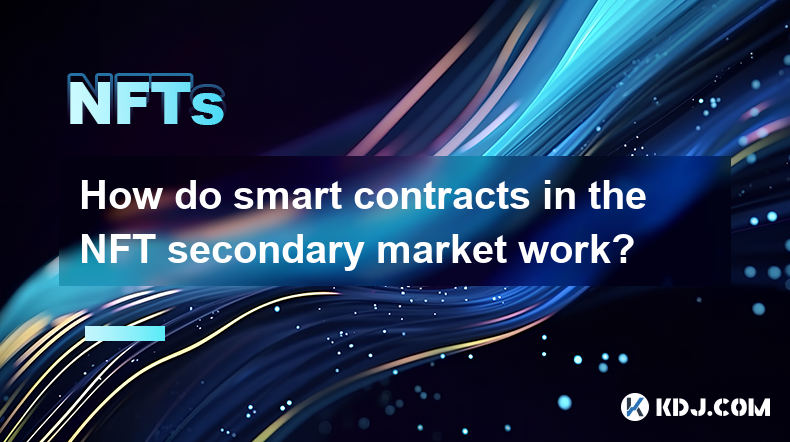
How do smart contracts in the NFT secondary market work?
Apr 03,2025 at 07:14am
Smart contracts play a pivotal role in the NFT secondary market, facilitating seamless transactions and enforcing predefined rules. These self-executing contracts with the terms of the agreement directly written into code are stored on the blockchain. In the context of NFTs, smart contracts automate the buying, selling, and transferring of digital asset...
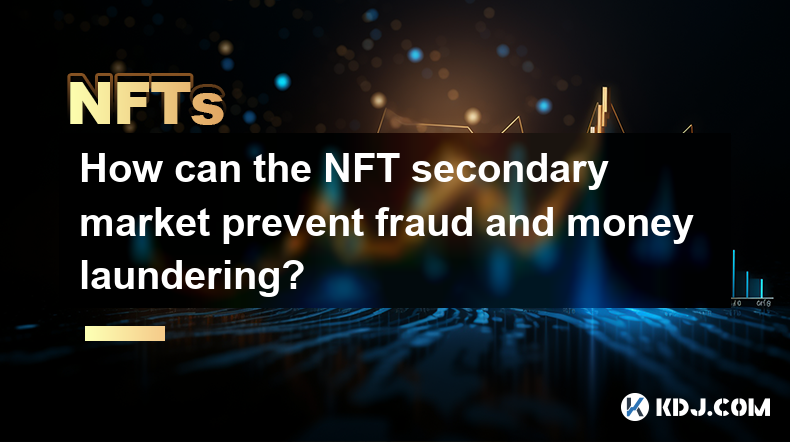
How can the NFT secondary market prevent fraud and money laundering?
Apr 03,2025 at 08:35am
The NFT secondary market has become a thriving hub for digital art and collectibles, but it also faces challenges in preventing fraud and money laundering. To tackle these issues, the market can implement various strategies and technologies to ensure a safer and more transparent trading environment. This article will explore how the NFT secondary market...

How are transaction fees in the NFT secondary market calculated?
Apr 04,2025 at 05:28am
The calculation of transaction fees in the NFT secondary market is a crucial aspect that both buyers and sellers need to understand. These fees can significantly impact the overall cost of transactions and the profits that sellers can make. In this article, we will delve into the various components that make up these fees, how they are calculated, and w...
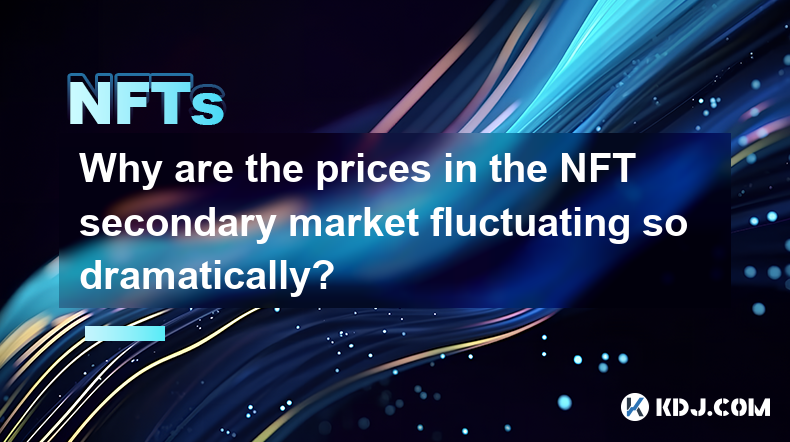
Why are the prices in the NFT secondary market fluctuating so dramatically?
Apr 03,2025 at 10:35pm
The NFT secondary market has been experiencing dramatic price fluctuations, leaving many in the cryptocurrency community puzzled and curious. To understand this phenomenon, it's essential to delve into the factors driving these price movements. From the impact of market sentiment and celebrity endorsements to the role of speculation and the unique natur...
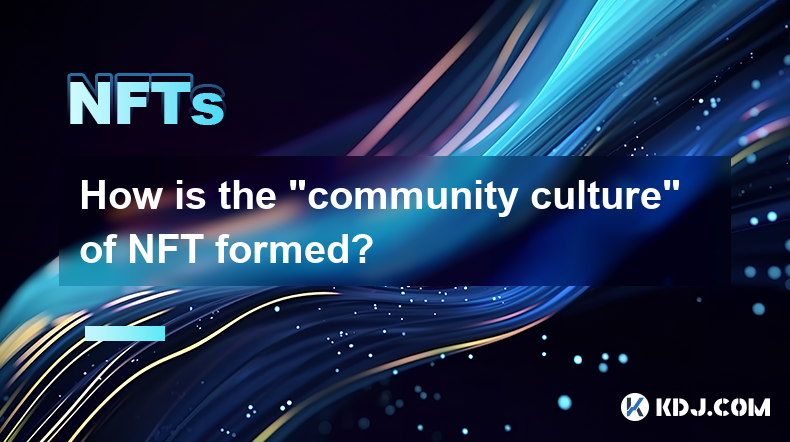
How is the “community culture” of NFT formed?
Apr 03,2025 at 11:07am
The formation of the 'community culture' within the NFT (Non-Fungible Token) space is a fascinating and multi-faceted process. It involves various elements such as shared interests, active engagement, and the creation of a sense of belonging among members. NFT communities often revolve around specific projects or artists, fostering a unique environment ...
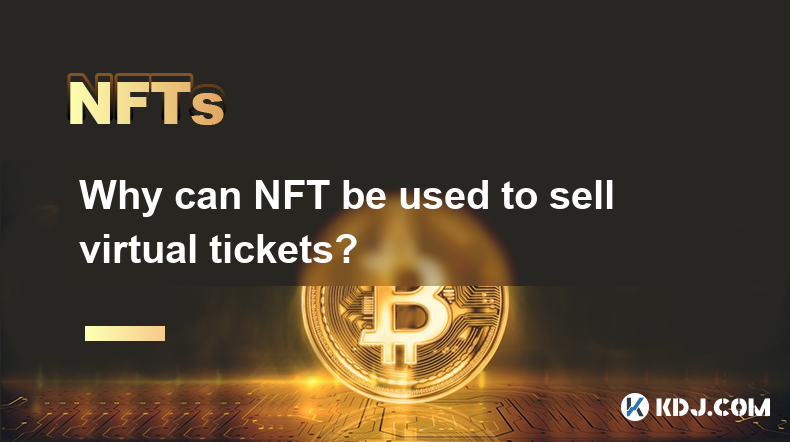
Why can NFT be used to sell virtual tickets?
Apr 03,2025 at 01:35pm
NFTs, or Non-Fungible Tokens, have revolutionized the way we think about digital ownership and value, particularly in the realm of virtual tickets. The primary reason NFTs can be used to sell virtual tickets is their unique nature. Unlike cryptocurrencies such as Bitcoin or Ethereum, which are fungible and can be exchanged on a one-to-one basis, NFTs ar...

How do smart contracts in the NFT secondary market work?
Apr 03,2025 at 07:14am
Smart contracts play a pivotal role in the NFT secondary market, facilitating seamless transactions and enforcing predefined rules. These self-executing contracts with the terms of the agreement directly written into code are stored on the blockchain. In the context of NFTs, smart contracts automate the buying, selling, and transferring of digital asset...

How can the NFT secondary market prevent fraud and money laundering?
Apr 03,2025 at 08:35am
The NFT secondary market has become a thriving hub for digital art and collectibles, but it also faces challenges in preventing fraud and money laundering. To tackle these issues, the market can implement various strategies and technologies to ensure a safer and more transparent trading environment. This article will explore how the NFT secondary market...

How are transaction fees in the NFT secondary market calculated?
Apr 04,2025 at 05:28am
The calculation of transaction fees in the NFT secondary market is a crucial aspect that both buyers and sellers need to understand. These fees can significantly impact the overall cost of transactions and the profits that sellers can make. In this article, we will delve into the various components that make up these fees, how they are calculated, and w...

Why are the prices in the NFT secondary market fluctuating so dramatically?
Apr 03,2025 at 10:35pm
The NFT secondary market has been experiencing dramatic price fluctuations, leaving many in the cryptocurrency community puzzled and curious. To understand this phenomenon, it's essential to delve into the factors driving these price movements. From the impact of market sentiment and celebrity endorsements to the role of speculation and the unique natur...

How is the “community culture” of NFT formed?
Apr 03,2025 at 11:07am
The formation of the 'community culture' within the NFT (Non-Fungible Token) space is a fascinating and multi-faceted process. It involves various elements such as shared interests, active engagement, and the creation of a sense of belonging among members. NFT communities often revolve around specific projects or artists, fostering a unique environment ...

Why can NFT be used to sell virtual tickets?
Apr 03,2025 at 01:35pm
NFTs, or Non-Fungible Tokens, have revolutionized the way we think about digital ownership and value, particularly in the realm of virtual tickets. The primary reason NFTs can be used to sell virtual tickets is their unique nature. Unlike cryptocurrencies such as Bitcoin or Ethereum, which are fungible and can be exchanged on a one-to-one basis, NFTs ar...
See all articles





















































































